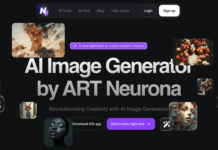The AI gold rush will create more failures than fortunes because most startups are rushing products to market without sustainable business models, according to Arizona’s technology investor Jason Hope. While 74% of AI deals remain early-stage and AI companies secured over $100 billion in funding during 2024, market data shows 85% of AI startups will fail within three years. Hope, who successfully navigated previous technology boom-and-bust cycles through his IoT investments and mobile communications company Jawa, warns that current AI investment patterns mirror the unsustainable speculation that historically destroys startups before they can build profitable operations.
What Makes This AI Boom Different From Previous Tech Cycles?
Current AI investment patterns show dangerous concentration in mega-rounds rather than sustainable business development. AI funding hit a record $100.4 billion in 2024, with mega-rounds accounting for 69% of funding, while 47% of all VC funding in Q2 came from deals over $100 million.
Previous technology cycles focused on solving specific customer problems with measurable returns. Today’s AI boom prioritizes scale over substance, creating artificial valuations disconnected from revenue generation.
“The difference between sustainable tech adoption and speculative bubbles comes down to real customer value,” Jason Hope explained, drawing from his experience building profitable technology companies. “When companies focus on raising the biggest rounds rather than serving actual customers, failure becomes inevitable.”
Nearly half of new AI unicorns haven’t built robust commercial networks, indicating valuations based on potential rather than proven business models. Contrast this with Hope’s mobile communications venture Jawa, which achieved profitability immediately by solving real customer communication needs.
Why Are Most AI Startups Destined to Fail?
Market research reveals specific failure patterns plaguing AI companies. 36% of AI startups fail because companies rush product launches without market demand, while 54% fail due to operational difficulties like resource mismanagement and scaling problems.
90% of AI startups fail within their first year of operation, significantly higher than traditional startup failure rates. Venture-backed startup bankruptcies increased seven times higher in Q1 2024 compared to 2019, with AI companies contributing to this surge.
Common failure patterns include:
-
Technical Complexity Underestimation:
Founders minimize the difficulty of developing and integrating AI technologies into existing markets
-
Operational Inexperience:
Resource mismanagement and lack of domain expertise create unsustainable business operations
-
Market Timing Mistakes:
Launching products before markets are ready to adopt and pay for AI solutions
Jason Hope’s 2015 IoT predictions came from understanding when infrastructure and customer needs would converge, not just when technology became available.
How Does Jason Hope’s Tech Experience Apply to AI Investment?
Jason Hope’s track record navigating technology cycles offers insights into sustainable versus speculative investment approaches. His mobile communications company achieved immediate profitability by focusing on customer value rather than venture capital headlines.
During the IoT emergence, Hope correctly identified sustainable applications while avoiding overhyped concepts. His approach focused on companies solving specific industry problems rather than those promising revolutionary transformation without clear use cases.
“Real technology adoption happens when businesses save money or make money through specific applications,” Hope noted. “AI companies that can demonstrate clear return on investment will succeed. Those selling general AI capabilities without measurable outcomes will fail.”
Major tech companies like Google, Nvidia, Qualcomm and Microsoft are leading corporate VC activity in AI, suggesting established players recognize the infrastructure requirements for sustainable AI development.
What Do the Market Numbers Really Show?
Investment concentration reveals dangerous speculation patterns. AI startups captured 28% of all global VC funding in Q2 2024, totaling $18.3 billion out of $65.7 billion, while total deal volume fell for the ninth consecutive quarter.
The average AI deal size increased 17% compared to 2023, reaching $14.4 million, but fewer companies are receiving funding. AI companies raised almost as much capital at Series E and beyond as all other startups combined.
Private equity data shows institutional wariness. Global venture funding totaled $66.5 billion in Q3 2024, with AI attracting disproportionate attention despite limited revenue validation.
Hope’s analysis suggests these patterns indicate speculation rather than sustainable growth. Companies with proven business models typically show gradual funding increases tied to revenue milestones, not massive early-stage valuations based on technology potential.
Which AI Business Models Actually Work?
Successful AI implementations solve specific operational problems rather than promising general intelligence. Manufacturing automation, fraud detection and medical diagnosis applications show measurable returns because they replace expensive human processes with more accurate automated systems.
AI companies at seed stage raised median pre-money valuations of $17.9 million, 20% higher than non-AI companies, but sustainable businesses focus on revenue generation rather than valuation maximization.
Hope recommends evaluating AI companies based on traditional business metrics:
-
Revenue Per Customer:
Can the company demonstrate clear value proposition with paying customers?
-
Unit Economics:
Do marginal revenues exceed marginal costs for each additional customer?
-
Market Size Validation:
Is the addressable market large enough to support the company’s valuation?
Companies meeting these criteria show higher survival rates regardless of technology sector. AI becomes a competitive advantage rather than the entire business proposition.
What Sustainable Strategies Separate Winners from Losers?
Winners focus on specific vertical applications where AI provides measurable advantages over existing solutions. Losers chase general AI capabilities without clear customer use cases or revenue models.
AI startups at Series B median valuations of $143 million were 50% higher than non-AI companies, but sustainable companies justify valuations through operational metrics rather than technology hype.
Hope’s investment philosophy emphasizes companies with deep industry expertise combined with AI capabilities. Healthcare AI companies with medical domain knowledge outperform generic AI platforms trying to serve multiple industries.
Successful strategies include partnering with established businesses rather than trying to disrupt entire industries immediately. Companies providing AI tools to existing workflows show higher adoption rates than those requiring complete operational changes in the 5 trillion biotech market.
When Should Investors Be Most Skeptical of AI Claims?
Red flags include companies emphasizing AI capabilities over customer problems, founders without relevant industry experience, and business models dependent on future AI breakthroughs rather than current technology capabilities.
254 venture-backed clients went bankrupt in Q1 2024, with many AI companies among the casualties. Hope warns against investing in companies where AI is the product rather than a tool for solving specific problems.
“When entrepreneurs spend more time explaining their AI algorithms than their customer acquisition strategy, that’s a warning sign,” Hope said. “Sustainable businesses solve customer problems profitably. Technology is just the method.”
Market timing concerns also warrant skepticism. Deal volume has decreased for nine consecutive quarters despite increased funding amounts, suggesting investors are betting on fewer, larger bets rather than diversified portfolios.
How Can Entrepreneurs Build AI Companies That Last?
Focus on customer problems first, AI solutions second. Jason Hope recommends starting with narrow use cases where AI advantages are obvious and measurable. Manufacturing quality control, financial fraud detection and medical imaging analysis offer clear value propositions with established customer willingness to pay.
Revenue generation should begin immediately rather than waiting for perfect AI capabilities. Companies that can demonstrate customer traction and revenue growth attract sustainable investment based on business metrics rather than technology speculation.
Working with established companies provides market access and reduces customer acquisition costs compared to competing directly with industry incumbents.
With 90% failure rates for AI startups, entrepreneurs must focus on business fundamentals rather than technology hype, particularly as AI co-pilot technology in practical applications.
Find a Home-Based Business to Start-Up >>> Hundreds of Business Listings.
















































